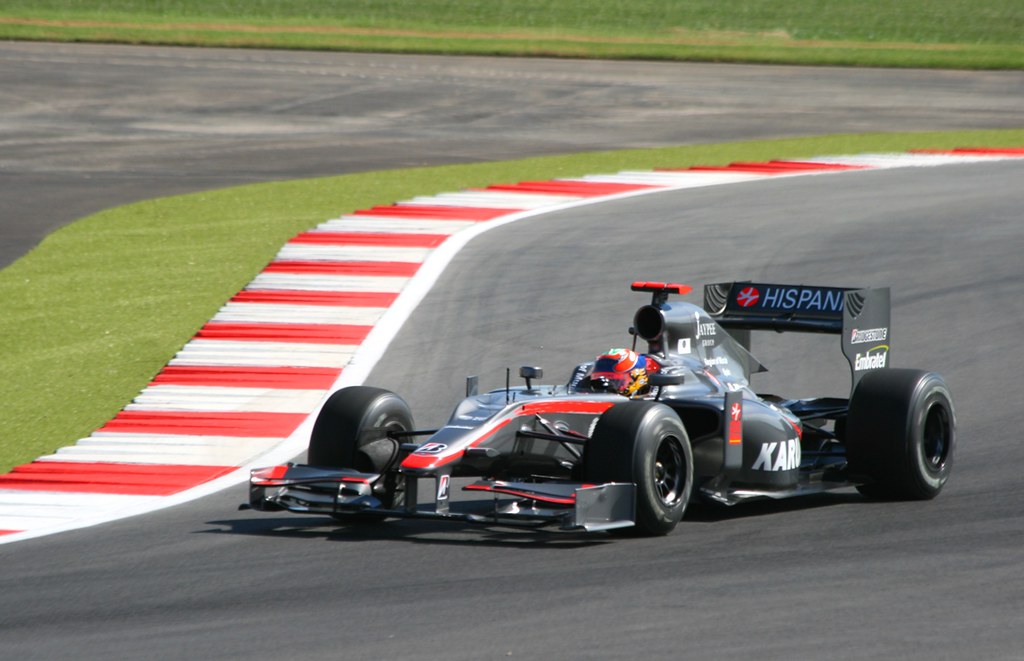Only Two Indian f1 Drivers
Only two Indian drivers have ever competed in Formula One – Narain Karthikeyan and Karun Chandhok. Together, they have participated in 59 Grand Prix entries over 8 seasons from 2005 to 2012. Though neither driver won a race or achieved a podium finish, their careers marked important milestones for India in the sport.
Narain Karthikeyan – India’s First Formula One Driver
Narain Karthikeyan, born in 1977, became India’s first ever Formula One driver when he debuted with the Jordan team in 2005. He brought a strong racing resume to F1, having won championships in British Formula Ford, Formula Asia, and more. His chance in F1 came after impressive test performances for Jordan and Jaguar convinced team boss Eddie Jordan to sign him.
2005: Maiden Season with Jordan
In his maiden season, Karthikeyan scored points in only his third race at the infamous 2005 United States Grand Prix, finishing 4th as the majority of teams withdrew over tire safety concerns. Together with his teammate’s Tiago Monteiro, it would prove to be Jordan’s best result all season. Karthikeyan qualified and finished well on occasion, but the underfunded team struggled with reliability issues.
2006-2007: Reserve Driver for Williams
With Jordan replaced by Midland F1 for 2006, Karthikeyan landed a reserve driver role with Williams. He participated extensively in testing and practice sessions over 2006-2007 as the team evaluated him for a potential race seat. His running impressed sufficiently to earn a promotion to third driver in 2007 behind Nico Rosberg and Alexander Wurz.
2011-2012: Racing Return with HRT
After a hiatus from racing, Karthikeyan returned to Formula One in 2011 with minnows HRT Racing in 2011. Though the backmarker team offered little in terms of competitiveness, Karthikeyan relished the opportunity to compete at home in India’s first ever Grand Prix at Buddh International Circuit in 2011, finishing ahead of his teammate in 17th. He remained with HRT alongside Pedro de la Rosa for 2012 until HRT’s unfortunate collapse.
Karun Chandhok – India’s Second Driver
Karun Chandhok entered Formula One in 2010, becoming India’s second ever driver in the sport. With strong junior results in GP2 and Formula V6 Asia, Chandhok brought good talent and experience when he signed with newcomers HRT Racing.
2010: Difficult Rookie Year at HRT
Driving for first-year team HRT in 2010 proved extremely challenging for Chandhok. Though he finished 14th in Australia, he mostly languished near the back of the pack as HRT struggled to develop their car. After 10 race starts, Chandhok lost his seat to Sakon Yamamoto from Germany onwards.
2011: Single Race with Team Lotus
For 2011, Chandhok secured a reserve driver role with Team Lotus. He provided extensive testing and practice running through the first half of 2011 before finally getting a race start in Germany, substituting for Jarno Trulli. However, Chandhok finished 20th and last after technical issues.

Analysis of Indian Drivers’ Formula One Careers
Despite the immense talents of both Karthikeyan and Chandhok, their Formula One careers faced substantial obstacles, and never managed to even be considered mid-level drivers. Both of these careers ended rather quickly, but neither of the driver proved worth enough to keep them for longer. The only points scored by Indian F1 driver was at the 2005 Grand Prix, when even the slowest of all cars scored points.
Lack of Competitive Seats
A key challenge was simply the lack of competitive race seats available to them. Throughout their careers, both drivers often found themselves racing for underfunded backmarker teams like HRT and Jordan that offered little chance to showcase their full potential.
Financial Constraints
Financial considerations also hampered their retention of race seats. Though clearly fast enough to get into F1, Karthikeyan and Chandhok struggled to match the sponsorship funding levels of their rivals. This financial factor often hindered their chances to progress up the grid into better cars.
Early Phase for India in F1
As the first Indian F1 drivers, Karthikeyan and Chandhok also did not yet have the benefit of domestic infrastructure for driver development compared to established racing powerhouses in Europe like Britain and Italy.
Legacy of India’s f1 Drivers
Though race victories proved elusive, Karthikeyan and Chandok left a notable legacy from their careers. Showing the difficulty in being a Formula 1 driver. India, despite it’s enormous size and population, never got close to success in Formula 1, so the driving stories of their only two drivers may be an inspiration for the next generations.
Paving the Path for Future Generations
As the first two drivers from India in Formula One, they paved the exciting path towards the pinnacle of motorsport for future generations of young Indian drivers. This “roadmap” to F1 didn’t previously exist in India.
Inspiring Junior Talent at Home
Their journey to the highest level of international racing greatly inspired up-and-coming talent in India’s domestic racing scene. Seeing their countrymen succeed made the top levels of motorsport seem more achievable to young Indian racers.
Putting India on the Global Racing Map
Karthikeyan and Chandhok also crucially put India on the worldwide motorsport map through their appearances in Formula One. This triggered increased global attention and investment into Indian domestic racing programs.
Karun Chandhok also shows, that if you dream of Formula 1, you may still work in it, despite not being a racing driver. His work as a sports experts for the Sky Sports team shows that through sheer passion and hard work, everyone can work their dream job. His tech analysis are loved by the fans, and after a couple season’s many can’t imagine the F1 race weekends without his presence and reports from the pit lane.

